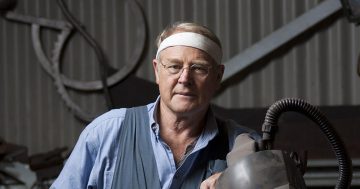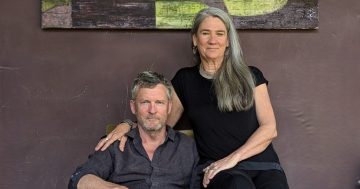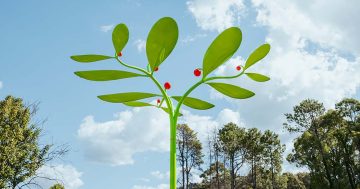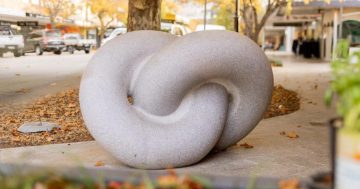
Wojciech Pietranik is proud to be called a traditional sculptor. Photo: Elizabeth Masters.
Canberra sculptor Wojciech Pietranik has much to be proud of.
His work is held by the British Museum, the Royal Coin Cabinet in Sweden and in private collections across the world.
He was one of a handful of artists invited to submit designs for the victory medals of the 2000 Sydney Olympics – and won the selection process. He also spent 23 years working at the Royal Australian Mint, designing coinage and commemorative medals.
With such success, he might be expected to rest on his laurels in retirement. But he’s having none of it. At 72, he devotes his days to his great love – carving in stone.
“Sculpture is a passion. It’s the reason for life,” he says with a fond smile.
Wojciech was born in Gdansk, Poland. From 1970 to 1975, he studied at the Academy of Fine Arts to gain a Master’s Degree in Sculpture.
“In Poland, there was more awareness of art, even in the hard times, and we were paid well. We were recognised as professionals.”
When he graduated, Wojciech’s living came from conservation work.
“After the war, the damage was awful everywhere. We were working to repair the decoration on old buildings. It was good money, so after working for a few months I could take a break and create art.”
He also taught sculpture to high school students in Gdynia for “a good few years”.
After some time in England, Wojciech planned to return to Poland but chose not to when martial law was imposed.
Instead, in 1985, he moved to Darwin where his sister lived. After three years there, he and his wife Katarzyna moved to Canberra with their two daughters for the cooler climate.
His first move was to contact the Canberra School of Art. There he was introduced to Berendina de Ruiter, one of the few sculptors in Canberra who also carved in stone. Their long-term friendship now sees them sharing a studio in Queanbeyan.
In Canberra, he also began work as a designer at the Mint.
His 20th anniversary there was marked in 2010 with a special exhibition of the coins and medallions he had designed. They included commemorative coins for aspects of Australian history, such as the Gallipoli Anzacs and the Eureka Stockade, but the coin design he is most proud of is Kangaroo at Sunset. His work also graces the medallions presented to winners of the Prime Minister’s Prizes for Science.
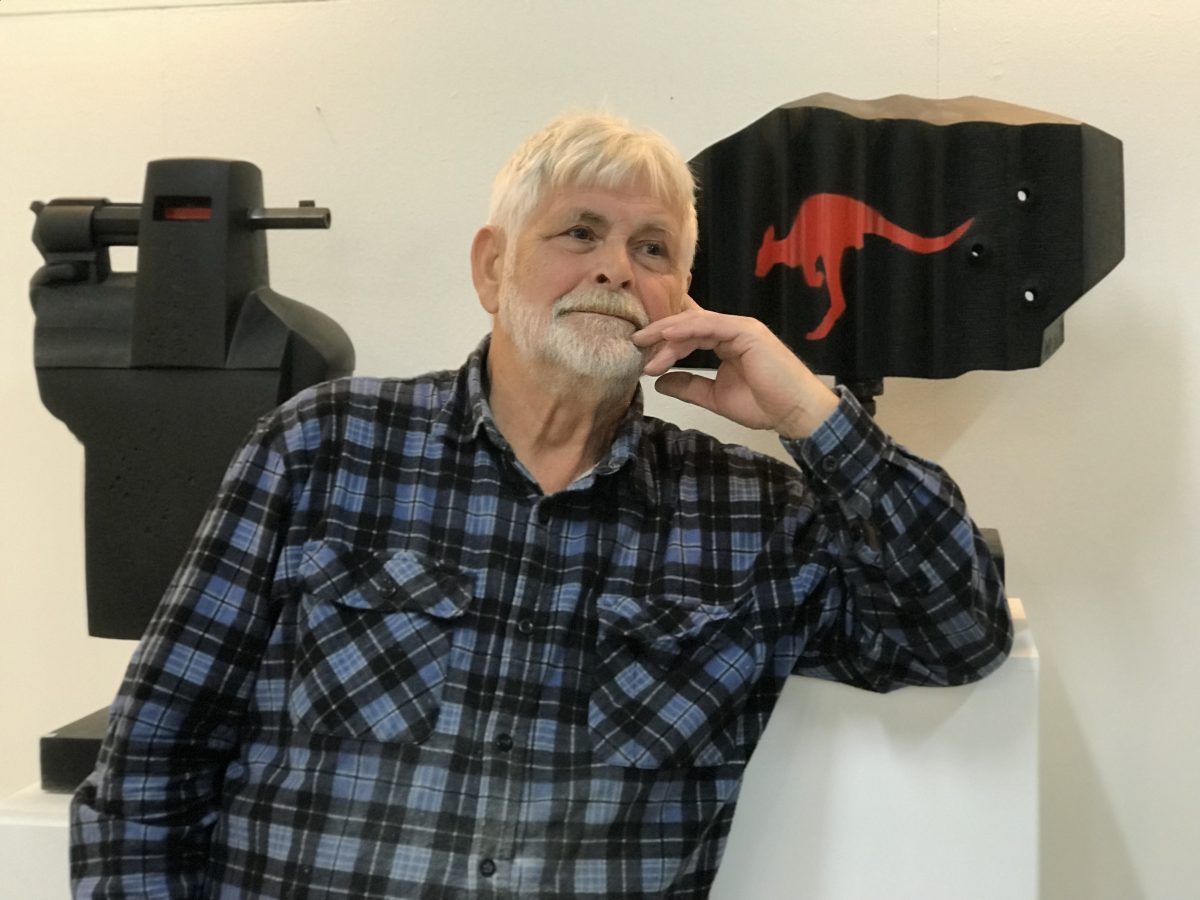
His subject matter includes Australian themes such as Ned Kelly and kangaroos. Photo: Elizabeth Masters.
In 1992 he gained a Churchill fellowship to the School of Medallic Art in Rome to develop his skills in bas-relief sculpture.
After designing the 2000 Olympic victory medal, he attended the closing ceremony of the Sydney Games. He remembers it as one of the times in his life that was “very full of joy”. The other was the period of strikes in Poland in the 1980s.
He retired from the Mint in 2012 but is busier than ever.
“I work even harder now,” he says. “It’s not for the money. It’s for art’s sake. You pursue your passion.”
While he still makes two or three artistic medals a year for FIDEM (Federation Internationale de la Medaille d’Art) exhibitions, they are not the main part of his work.
“Now, I usually work with the stone, having this or that idea. I don’t have a final vision. It’s the sheer pleasure of carving the stone, using the hammer and chisel. I love it so much.”
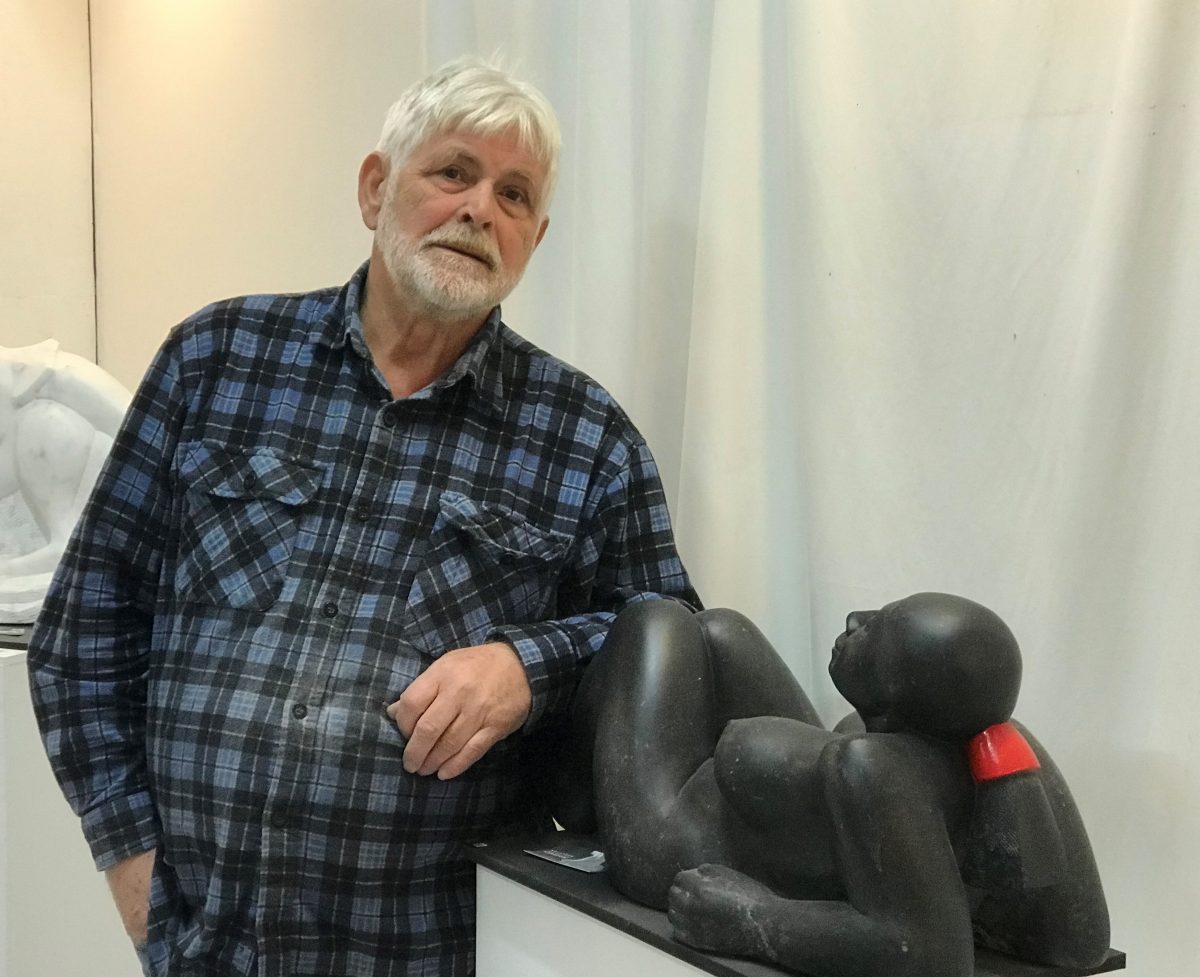
Wojciech uses local black basalt and limestone in his work. Photo: Elizabeth Masters
His joy in carving is tinged with sadness. With fewer universities offering stone sculpture to art students, Wojciech fears the skill might die out.
“While people often buy paintings for their walls, you don’t so often see sculptures in people’s homes.”
It is the permanency of stone that drives him. He may work on a piece for weeks, sometimes months. His subjects range widely, from a whimsical Ned Kelly to nude figures, classical heads to religious pieces. Many are created with gentle humour. While his pieces have emerged from marble, timber, granite and sandstone, in Canberra, he uses mainly local black basalt and limestone.
He and Berendina open their studio to the public once a year, usually in October or November, to show their work. But he’s not a man to chase the limelight.
“It’s not about me; it’s about what I’m creating,” he says. “I’m very proud to be called a traditional sculptor. Here, I work every day and will be working to the end of my life.”
Original Article published by Elizabeth Masters on Riotact.






